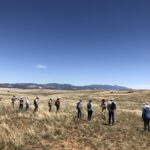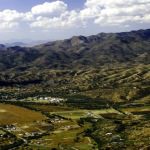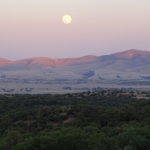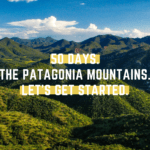Oct 7, 2012 | Blog
John Christopher Ackerley, Andrea Dalessandro and Rosanna Gabaldon are candidates for Arizona Representative District 3. Here are their positions on issues relevant to PARA’s mission to monitor the activities of industrial developers, such as mining corporations, as well as government agencies, to make sure their actions have long-term, sustainable benefits to our public land, our watershed, and our communities.
1. When considering an industry’s promise to bring jobs to our community, what other factors would you consider when deciding whether or not the overall impact of such activity would ultimately be good for the long term sustainability of our communities?
JOHN CHRISTOPHER ACKERLEY
Very little of the eventual fate of the proposed mining projects in Southern Arizona will be controlled by direct action of the State Legislature; and rightly so. I do not believe Southern Arizona communities would be well served if the State Legislature were the arbiter of the ultimate effects of proposed projects. Ideally decisions about the net effects of such project should be made by the local communities directly effect by the projects; it is their priorities the should be reflected. As a State Legislator, it would be my responsibility to ensure the process by which decisions are reached is transparent and that all parties are heard.
ANDREA DALESSANDRO
Past track record of the entity and its leaders- experience-financial history-environmental-treatment of employees and neighbors-past promises kept?
Will local residents be hired? How many? For how long? Fairly compensated? Safe work conditions?
Realistic tax impact-income, property and sales tax
Required infrastructure and who pays?
Impacts on other jobs-especially small businesses
Impacts on roads and safety-are more traffic accidents likely?
Impacts on noise levels and quality of life
Health effects and impact of access to medical facilities
Water use-recharge-safe yield-contamination risk
Impact on air quality
Impact on wildlife
What will be the impact of this industry on travel and tourism?
Will there be negative impacts to other areas in the broader region?
How will the community be characterized if this industry came to the area?
ROSANNA GABALDON
The findings of federal government agencies related to the impact of the activity.
The legality issues related to such activity.
The industry’s willingness to participate in dialog related to the mitigation for their environmental impact.
2. As we desert dwellers are aware, water is a precious resource. What actions will you take to assure protection of the quality and quantity of our water resource?
JOHN CHRISTOPHER ACKERLEY
The viability and politics of any development in Arizona eventually hinges on water. In a similar vain as the previous question, it is not the state legislature’s job to adjudicate water issues, but to ensure the processes is fair and transparent. However, with water there is a additional component. We must ensure that any conversation about water is grounded by a realistic assessment of our available resources, and gives reverence to the protection of those resources. More passages of the Arizona Revised Statutes are devoted to water issues then perhaps any other issue. It would be folly for a legislator without expertise in the area to propose over-simplistic solutions. Rather as a legislator, I would commit to doing everything I could to ensure that unbiased experts had access and input into the decision making processes.
ANDREA DALESSANDRO
Extend water harvesting tax credits. My system has 620 gallon capacity.
Tighten water permitting process. We need 21st century laws for a 21st century economy and sustainability.
Protect the aquifers because the current Aquifer Protection permitting process is functioning as a aquifer destruction mechanism.
Pass measures that support conservation for residential and all water users with information about the best available practices.
ROSANNA GABALDON
Hold the AZ Department of Water Resources (ADWR) accountable to the States commitment to achieve Safe Yield by 2025.
Restore funding of the AZ Department of Environmental Quality (ADEQ).
Encourage the US IBWC to address the contamination issues at the Mexican Border.
Encourage the State to tax plastic bottles to encourage less plastic bottles in our landfills and use the funds collect in support of ADEQ and ADWR
3. If you support open pit mining in the Santa Rita Mountains, Canelo Hills, Patagonia Mountains, and the San Rafael Valley, what is your proposed solution for the economic bust that will happen after the mines play out in 20 years (historical track record and what current mining applicants forecast as period of operation)?
JOHN CHRISTOPHER ACKERLEY
The basis of this question highlights the need for strong and effective local governments. Those looking to the State to provide answers in this area will surly be disappointed. It is those with a vested interest in their immediate communities that must ensure development accompanying such projects has a plan for use after the closure of the mine. They must also be watchful that commitments to services and programs do not place the community in an unsustainable financial situation when the tax revenues subside.
ANDREA DALESSANDRO
After extensive review and listening to residents and experts at many forums throughout the region over several years, I am against the mines in these areas.
ROSANNA GABALDON
I am aware of the economic cycle of mines and I encourage local communities work to diversify their major employers while mines are growing. Be aware and anticipate the mine closing. Taxes should be collected specifically to help mitigate the spiral when the mine does close. It is not wise to take a 30 year mortgage if you work for a mine that has a 20 year life. Employees of the industry should be encouraged to save and plan for the economic downturn and education is our best tool.
4. What types of support do you suggest for fostering our existing economic business models such as local food production, wineries, eco-tourism, heritage tourism, etc?
JOHN CHRISTOPHER ACKERLEY
As the economy recovers, provided the needs of public education, health and safety can be fully met, the State needs to renew its investment in effective programs to increase tourism. I would submit that this is widely held attitude among business and political leaders. My job as a State Legislature will be to ensure that the incredible assets of southern Pima and Santa Cruz counties are not overlooked in the conversation.
ANDREA DALESSANDRO
First, we need to tell a different story about the border, one in which security is only a slice of the picture. We need a collaborative process where we think outside the box. When politicians and others tout southern Arizona a danger zone or that we have “open borders.” It is not only untrue but it hurts tourism, real estate values and businesses, especially small businesses.
Last year I attended the inaugural Santa Cruz Nature and Heritage Festival in Rio Rico. I heard a lot of very knowledgeable people who spoke of the rich history, cultural diversity, incomparable nature and safety of the region.
At this point, I am underwhelmed with the Arizona Commerce Authority.
After the election, please help me meet stakeholders from whom I can learn what support would help different sectors the most.
ROSANNA GABALDON
Economic recovery will be driven by the businesses and workers; as law makers we want to set the most favorable conditions we can for growth and job creation for years to come. I encourage the creation of jobs for Arizona in the areas of construction and education. We need to rebuild our aging infrastructure and repair and modernize our schools. As a State we can live within our means and still make the investments needed to prosper.
5. What other visions of sustainable economic activities do you have for our area?
JOHN CHRISTOPHER ACKERLEY
Southern Arizona (especially outside the Tucson metro area) needs to extent its economic activity beyond agriculture and tourism. We must put ourselves in a position to capitalize on the economic opportunities presented by increased trade with our southern neighbors in a way that is focused on long-term goals and that respects the cultural and environmental assets of the region. As a State Legislator, perhaps the biggest contribution I could make is supporting efforts and/or ensuring a venue for the various organizations throughout the district to collaborate.
ANDREA DALESSANDRO
Until last week, I never thought of expanding Medicaid as a sustainable economic development mechanism, much less one that would benefit Legislative District 2. After seeing reference to it last week, I went to the Grand Canyon Institute web site and read the full Policy Paper at https://grandcanyoninstitute.org/sites/ grandcanyoninstitute.org/files/ GCI_Policy_Arizona_Medicaid_Options_Sept_2012.pdf
In LD 2, 34% of the children live in poverty and the Santa Cruz County unemployment rate hovers around 18%. Additionally, Tucson is the 6th poorest large city in the country.
I contend that our area will benefit, disproportionally (in a good way) if Option 3 is implemented. It will honor the intent of the voters, who in 2000 passed Prop 204, Healthy Arizona, and take full advantage of federal matching funds of the Affordable Care Act. It will not only provide cost effective coverage for more AZ children and low income childless adults but it will create jobs in health care professionals and their support staffs. It will benefit rural underserved areas. Because of this influx of nearly $8 BILLION in federal funds statewide over four years, there will be increased income and sales tax revenue.
Where applicable, I would like to see more solar in Santa Cruz County but I am aware of some of the obstacles that have to be overcome.
I am exploring to the possibility of tax incentives for the film industry because I think it could beneficial to southern Arizona. Currently film makers fly over Arizona to Texas and New Mexico.
ROSANNA GABALDON
Sometimes you got to give a little to help encourage new businesses to develop in your community. I encourage public private partnerships and collaboration to benefit our area. Our State could make a more united effort to encourage economic development. I would like to see a unified effort to bring bio science and renewable energy jobs to Southern AZ, a key element of this effort will be an investment in our youth, providing them the skills and education needed for this growing industry.
6. Arizona Proposition 120 asserts State rights over air, water, public lands, minerals, wildlife, and other natural resources within Arizona. What is your position on this Proposition and why?
JOHN CHRISTOPHER ACKERLEY
While the balance between the state and federal government needs to be redressed, I am unconvinced that Prop 120 will contribute to a constructive discussion about the appropriate balance between federal and state control over public lands. The majority of the added language is a rational statement with no actual effect. Language releasing claims to public land and consenting to the act of congress that paved the way for Arizona’s statehood is repealed, but then effectively inserted in another section. The gray area is public lands not owned by the federal government but subject to federal restrictions in one form or another. It is naive to think that a simple statement of state sovereignty will mitigate any of the inevitable litigation that would result form efforts to repurpose public lands. Simply put, Prop 120 will not resolve the very serious issues between the Arizona and the federal government concerning the disposition, use and access to public lands.
ANDREA DALESSANDRO
Against. This is another waste of time proposed by some in the Legislature. These resources belong to the people and they were part of the deal in our journey to statehood. The state of Arizona and, especially the Legislature, has demonstrated that they are ill equipped to manage even the state parks. How can they even think that they could manage the expanse of federal public land and its resources?
We need the federal protections of Endangered Species Act, Clean Air Act, Clean Water Act. Without federal protections, I expect that some would be advocating for uranium mining at Grand Canyon National Park and other endeavors that would have a lasting negative impact on Arizona and its residents.
The bottom line is that this proposal is wrong headed because it is in conflict of the U.S. Constitution’s Supremacy Clause and Arizona’s Enabling Act.
ROSANNA GABALDON
I oppose this proposition because appears to be unconstitutional.
As a non-profit organization with a pending IRS 501-c-3 application, Patagonia Area Resource Alliance (PARA) can not endorse specific candidates. PARA can ask questions of all candidates regarding their positions on issues relevant to PARA’s mission.
Oct 7, 2012 | Blog
Raul Grijalva and Blanca Guerra are candidates for US House of Representative District #3. Here are their positions on issues relevant to PARA’s mission to monitor the activities of industrial developers, such as mining corporations, as well as government agencies, to make sure their actions have long-term, sustainable benefits to our public land, our watershed, and our communities.
1. When considering an industry’s promise to bring jobs to our community, what other factors would you consider when deciding whether or not the overall impact of such activity would ultimately be good for the long term sustainability of our communities?
RAUL GRIJALVA
Job creation is a top priority. There’s no excuse for letting unemployment linger for so long when some people are making more money than ever. What we can’t do is throw cost-benefit analysis out the window. Jobs aren’t created in a vacuum. New industries need to build relationships in their community and can’t come in expecting taxpayer handouts. Factories, office parks, open pit mines and every other business have positive and negative impacts on their surroundings, and we have to be honest and realistic about them.
Economic development plans have to complement the long-term vision a community has for itself. That’s one reason Congress passed the National Environmental Policy Act (NEPA) to provide for an environmental review – including consideration of relevant science and input from the public – of any major federal action that will impact the environment. We can’t go back to the days when heavy industry called all the shots and locals were left with a big cleanup bill.
NEPA provides an important layer of review and gives communities a needed voice, but it doesn’t always ensure sustainable development. It only looks at proposed projects and doesn’t provide for forward planning. We need to remember, whenever we’re making a big economic decision, that job plans have to account for the values of the communities they affect. Will local residents see economic benefit, or will the employees be brought in from elsewhere? Will the product or service improve local quality of life, or enrich company executives at local expense? Often businesses will pass this test. Sometimes they will not.
BLANCA GUERRA
Could this project be done in another place; How much revenue would the project bring to the community; How many communities would the project support; Economic growth; Present unemployment rate; At this time, I would also consider the tax increases needed in order for the government to continue to maintain the unemployed budget and those on state aid.
2. As we desert dwellers are aware, water is a precious resource. What actions will you take to assure protection of the quality and quantity of our water resource?
RAUL GRIJALVA
A recent report from the U.S. Geological Survey highlighted the fragility of Arizona’s groundwater situation. Due to climate change and demand from a growing population, aquifer levels are diminishing at an alarming rate. We need better policies.
One of the most effective ways to address climate change is to reduce the amount of emissions through a revenue neutral carbon tax. This will reduce climate change and protect ground water supplies. The revenue generated can offset personal taxes, pay down the deficit, and be used to invest in conservation programs designed to mitigate the impacts of climate change and drought. I am an original cosponsor of the Save Our Climate Act, a bill that achieves these goals.
Preventing water pollution is as important as preventing overuse. From the Clean Water Act, Safe Water Drinking Act and other landmark environmental laws to grant and loan programs administered by the Environmental Protection Agency, the U.S. Department of Agriculture and others, the federal government is an important partner in protecting our water resources. Unfortunately, these programs and laws have been under attack by House Republicans. Their anti-regulatory agenda ignores the long-term environmental and social damage of weak laws that allow heavy industry to pollute without consequences. Water is scarce in the desert, and we must do what we can to protect it.
BLANCA GUERRA
Central Arizona Project. Expansion of it’s resource should at all times be considered.
3. If you support open pit mining in the Santa Rita Mountains, Canelo Hills, Patagonia Mountains, and the San Rafael Valley, what is your proposed solution for the economic bust that will happen after the mines play out in 20 years (historical track record and what current mining applicants forecast as period of operation)?
RAUL GRIJALVA
The short-term economic benefits of open pit mining across Southern Arizona do not outweigh the long-term environmental damage that will inevitably follow. Economic development should complement local visions for their future. I am not opposed to mining in general, but existing proposals in the Santa Rita area do not meet our community’s criteria for approval.
BLANCA GUERRA
I believe that 20 years of economic growth is good. I would ask the local businesses if they want 20 years of prosperous growth.
The surrounding area will only expand if the owners want to sell or legally, by right of ownership, divide their property.
I may be erred, but I do not believe there are plans for the county to sell real property at this time.
I challenge those who oppose Rosemont Copper to come up with their own plan to bring 20 years of projected economic growth, revenue, jobs to Southern Arizona and prosperous years to the local community as an alternate to the mines.
4. What types of support do you suggest for fostering our existing economic business models such as local food production, wineries, eco-tourism, heritage tourism, etc?
RAUL GRIJALVA
According to the U.S. Department of Agriculture, local food sales total $5 billion annually. We can’t afford to ignore this important sector of our economy. Enhancing and incentivizing local food production should be a priority for Congress.
I co-sponsor the Preserving Healthy Food for the Hungry Act, which provides grants to land-grant colleges and universities to improve access for low-income families to locally produced fruits and vegetables, and the Local Food, Farms, and Jobs Act, which creates insurance plans for diversified farming, helps schools buy local food, and allows customers to use SNAP cards at farmers markets. Our food policies are an economic issue, and we need to make sure local farmers get the support they need to compete with conglomerates that don’t always have local customers in mind.
Preventing the destruction of valuable scenery and natural resources is important for tourism in Southern Arizona. People travel from all over the world to enjoy our unspoiled natural views, our unique mountains and deserts, and our wilderness areas. If those become polluted or despoiled, our entire regional economy will suffer. Hotels will have fewer visitors, restaurants and markets will have fewer customers, and local tourism companies will have fewer clients. That’s not an economic vision I support.
BLANCA GUERRA
There will be more people driving through the area, such as workers, contractors and subcontractors. Those individuals will be bringing more customers to local businesses.
If I were Rosemont, I would gladly participate with fostering local businesses. Ask them.
5. Thomas Jefferson said : “I am not an advocate for frequent changes in laws and constitutions, but laws and institutions must go hand in hand with the progress of the human mind. As that becomes more developed, more enlightened, as new discoveries are made, new truths discovered and manners and opinions change, with the change of circumstances, institutions must advance also to keep pace with the times. ”
The Mining Law of 1872 was enacted to develop this part of the country and at the time mining used dramatically different extraction methods than today’s industry. What will you do to either outright cancel this law OR in the alternative, bring it to modern times and empower local communities to have control over their resources?
RAUL GRIJALVA
Mining law reform is absent from the national conversation about deficit reduction. It shouldn’t be. Every year we fail to reform the Mining Law of 1872, the American people are robbed of millions of dollars in lost tax revenue. I’ve asked the Government Accountability Office to put together a forthcoming report on the market value of minerals extracted from all federal land. Billions of dollars worth of natural resources are being extracted from public land at taxpayer expense and no one is keeping track of their worth or what revenue is being lost due to antiquated regulation. We have to fix this.
Until legislation is passed that implements fair royalty rates, I will continue to look for ways to, at the very least, determine the value of minerals extracted from public property. When people understand the opportunity costs associated with the status quo, the demand for reform will be undeniable.
BLANCA GUERRA
I believe home buyers receive disclosure of mines etc… in the area. That is the time when property buyers should have made the decision not to buy property there.
Mother earth decided where she was going to create copper. One cannot decide to plant, grow and harvest copper.
6. HR 3446, the “Fair Payment for Energy and Mineral Production on Public Lands Act” will require mining companies to pay a royalty, provide safeguards for clean water, and give communities and agencies a say about where mining will be permitted. What will you do to support this House bill or its Senate version?
RAUL GRIJALVA
I am a cosponsor of H.R. 3446 and will continue to work with my colleagues in the Natural Resources Committee to ensure its passage. This is a conversation we need to have.
BLANCA GUERRA
I would ask for specifics as to where and how the funds would be directed.
7. What other visions of sustainable economic activities do you have for our area?
RAUL GRIJALVA
From the Grand Canyon to the Sonoran Desert National Monument, Arizona has spectacular public lands, and there is tremendous potential for these protected spaces to complement existing business models across Southern Arizona. Areas set aside for conservation and recreation are a pillar of our job market and our way of life.
My Santa Cruz Valley National Heritage Area Act, which I introduced in May of 2011, would establish a new public-private approach to managing our valuable Southern Arizona natural resources. A National Heritage Area designation is a relatively new concept whereby Congress sets up a system for federal, local, public and private entities to preserve an area’s natural, historic, cultural and scenic value. It is a non-regulatory, voluntary approach to promoting conservation and would be an excellent complement to other local, sustainable future projects.
My bill would designate around 3,325 square miles of the Santa Cruz Valley as a National Heritage Area. I will continue to fight for this and other proposals that bring people together to improve our local economy rather than play them against one another.
As a non-profit organization with a pending IRS 501-c-3 application, Patagonia Area Resource Alliance (PARA) can not endorse specific candidates. PARA can ask questions of all candidates regarding their positions on issues relevant to PARA’s mission.
Oct 6, 2012 | Blog
A ‘hit-piece’ was not what I saw.
Re: Augusta Calls Film a “hit piece”, The Weekly Bulletin, 10/3/2012
On September 29th, I had the opportunity to watch the brief documentary Cyanide Beach which traces the recent history of some ill-fated mining ventures, in Italy and elsewhere, and the recurring faces who populate the Corporate Boards of the shifting projects. Augusta Mining, responsible for one of the new thrusts in Arizona towards strip mining, labeled the film a hit-piece, claiming a chain of loose and even false comparisons. But a hit-piece is not what I saw. As a Ph.D. researcher, I perceived careful work and statement of fact by the film maker, letting the audience largely draw their own conclusions. Rather than “guilt by association,” the film detailed industry guilt in environmental matters, and then asks reasonable questions about the associations. Career executives and investors involved in long-suspended projects do resurface years later involved in others, and thus the question is quite reasonable: will the new projects work out for their communities any better than the old ones? The industry spokespersons try to draw a stark separation between old projects and new ones, but the film stays with its facts. If past is prologue, should we be nervous about the future of mining? The facts, and the questions, are provocative.
David Budd, Ph.D., Patagonia, Arizona
Read film maker, John Dougherty’s column in Green Valley News on Augusta Resource executives’ history of deception.
Oct 4, 2012 | Blog
RE: Open Minds to the Mines, Nogales International, 09/18/2012
Dear Mr. Coppola,
It is reassuring to see the Nogales International publisher strongly encouraging business development in Santa Cruz County. Regrettably, the inspiration for your editorial came from a mining company banner at a social event. With your editorial title being “Open Minds to the Mines” you have stipulated that we must adhere to a comprehensive and critical evaluation along with clear sighted analysis of what this open pit mine will mean to our county. Acceptance of a business opportunity should not be based upon a hasty knee-jerk reaction to an advertising banner.
It is unrealistic to feel comfortable about the new open pit mines because of your father’s brief experience working at the Trench Mine. It is impossible to compare the Trench and Hardshell Mines of the last century to the current open pit mining process. To declare them one and the same is misplaced nostalgia. Growing up in Mohave County, I have first hand experience with the Goldroad, Oatman, Chloride and Signal Mines – none of these produced environmental destruction to the same magnitude as an open pit mine.
(more…)
Oct 4, 2012 | Blog
RE: http://www.nogalesinternational.com/opinion/editorial/open-minds-to-the-mines/article_80f7d140-01a9-11e2-b84b-0019bb2963f4.html
Dear Mr. Coppola,
It is reassuring to see the Nogales International publisher strongly encouraging business development in Santa Cruz County. Regrettably, the inspiration for your editorial came from a mining company banner at a social event. With your editorial title being “Open Minds to the Mines” you have stipulated that we must adhere to a comprehensive and critical evaluation along with clear sighted analysis of what this open pit mine will mean to our county. Acceptance of a business opportunity should not be based upon a hasty knee-jerk reaction to an advertising banner.
It is unrealistic to feel comfortable about the new open pit mines because of your father’s brief experience working at the Trench Mine. It is impossible to compare the Trench and Hardshell Mines of the last century to the current open pit mining process. To declare them one and the same is misplaced nostalgia. Growing up in Mohave County, I have first hand experience with the Goldroad, Oatman, Chloride and Signal Mines – none of these produced environmental destruction to the same magnitude as an open pit mine.
In Santa Cruz County, the old Mowry Mine at the head of Corral Canyon was worked for several centuries and its silver smelter relied on oak trees cut down by woodcutters. The area of Corral Canyon and Mowry Wash demonstrates extensive second growth of oak trees originally felled for wood to fuel the old Mowry smelter furnaces. The dimension of impermanent environmental destruction by the Mowry Mine was exceptionally small compared to the area of permanent devastation that will be created by the proposed Wildcat Silver Mine at the nearby Hardshell Mine site. Since modern day open pit mines require a working area of 10 to 15 square miles for mine pit, tailing piles, ore processing, water recirculation and retention ponds, and cyanide treatment and leaching ponds, the old Mowry Mine and the thousands of regrown oak trees will now be threatened with irreversible obliteration by Wildcat Silver – along with the scattered graves of the Mexican woodcutters who died during that era.
I also have a mining heritage. My grandfather and his two brothers worked for more than a spell as muleskinners in the southeastern Colorado coal mines. they worked for more than a decade at a two dollars per day wage, twelve hours a day, with a six day per week schedule. And no benefits. The families of miners accidentally killed in these John D. Rockefeller, Jr. mines were supported by other families passing the hat. Their willingness to work in the mines ended in 1914 when their families were attacked by Rockefeller’s men and the Colorado National Guard in the striking miners’ camp at Ludlow, Colorado. Fortunately, all of my relatives survived the Ludlow Massacre.
Even though my grandfather was an illiterate North Italian immigrant, he had a great deal of common sense and wisdom and he understood very well that technology was rapidly advancing in the mining industry. He knew he would not be rehired to work the new mines. Skilled miners from Denver, Pueblo and Raton were being employed. If he were alive, he would be reminding us to find out who will be hired to work these advanced technology open pit mines as most of the jobs will not go to local citizens inexperienced in open pit mining.
If the landscape and clean water resources were completely restored during and after mining operations, there would not be passionate arguments against the mines. It is correct to say “Mining technology too has come a long way from the days of statehood,” but one must ask how the new tools are used. Technology is tools. The use of a tool is determined by the human mind and heart. New tools are not being invented to enable mining companies to completely reverse their destruction of the environment. Mining companies demand that new tools be developed for the sole purpose of efficiently removing mineral wealth from the earth with the least expense. There is no altruistic ethic in the mining industry demanding that our environment be returned to a healthy premining state Their industry has never agreed to allocate profits to complete restoration of what has been contaminated and destroyed. When a mine is no longer profitable, the company declares bankruptcy and their executives escape back to Canada, Britain and Australia where they cannot be touched. Who cleans up the toxic debris and damage? The American taxpayer.
Since these mining industry historical facts do not reveal adherence to an ethical code as compared to medicine, it is laughable for the Nogales International to compare new technology for open pit mining with technological advancements used for caesarean sections. All of medicine is guided by a principal precept of medical ethics – first do no harm. Medical procedures are developed under the umbrella of medical ethics to facilitate healing of the human body and not to harm or permanently compromise the patient. New medical technology assists the physician in better diagnosis and treatment with only one goal in mind – heal the patient and return the patient to a healthy state.
To mine the pregnant uterus and witness the magical delivery of a healthy baby followed by the complete recovery of a mother’s health is completely opposite to an open pit mine permanently disemboweling Mother Earth.
Opposition to mining does not mean we have no concerns about developing employment for our families in need. However, we should be proactive in developing new business opportunities and not sitting back to wait for the next magical elixir salesman to exit the freeway promising jobs for everyone. It is illogical and unreasonable for the Nogales International to accuse “others complaining about the mines, (who) live comfortably in some of our rural areas and already got theirs so to speak.” Are you accusing industrious and successful ranching families in our rural areas as holding back development of industry and employment sources? Similarly, are you accusing farmers, contractors and business owners of preventing industrial development? Your accusation focus should be forcefully directed toward those responsible for bringing new business and industry to Santa Cruz County – county administrative officers.
How can this county bring in new industry if its previous administrative officers have not done their job? We have had a past administrative officer who deliberately ignored and rejected information and offers for the county to apply for grants and funds for alternative energy plants and their related manufacturing enterprises to be established in Santa Cruz County. And this neglectful past administrator has been hired by Augusta Resources to be in charge of Wildcat Silver’s Office of Sustainable Development. It is unthinkable for any open pit mine to claim their business to be sustainable development. The landmark definition of sustainable development is: “Development that meets the needs of the present without compromising the ability of future generations to meet their own needs.”
How can all of us, including mine worker families, meet our immediate and future generations’ needs when we are left with permanent compromise and destruction of the environment – contamination and restriction of water resources – bad air quality during pit excavation and from residual mountains of tailing debris – disruption of communities with inordinate increase in truck and railway transportation of ore going to China – overuse destruction of existing roads and highways to be repaired with taxpayer money – hazardous ore transfer stations – significant decrease in all property values. How in the world does this represent “sustainable development?”
Since “sustainable development” is impossible for an open pit mine to achieve, then affixing this intentionally deceptive label to its operations can be regarded only as a smoke and mirrors scheme. Augusta Resources has no previous experience developing a mine. They have hired an executive with a past history of failure to develop business and industry in this area. Are these facts a formula for success in this county? The important question is what methods are really being used to convince our county government and chamber of commerce that we need their open pit mine?
This land is our home. Water is life. Minerals and metals are commodities.
I say no to the mines.
Jon B. Coppa, MD
Venado Cola Blanca Vineyard, Inc.
Patagonia, Arizona
Oct 3, 2012 | Blog
This week the editor of one of our local newspapers, the Weekly Bulletin, wrote an editorial titled Open Minds to the Mines. In it he describes how his dad would rise before dawn to catch the bus that would take him to work at the Trench Mine in Harshaw during the 60’s. He states that although superfund atrocities spring to mind when we think about mines, we shouldn’t let that predjudice us from considering new mines in the Patagonias because mining companies now “work to comply with some of the strictest regulations designed to protect the environment.”
“Yes, a portion of the land may be forever scarred, but out of that dirt can come hundreds of decent jobs and an improved quality of life.”
He ends his editorial with…”I say yes to mines.”
This has caused quite the flurry of emails to our inbox! It seems that Mr. Coppola is trusting the mining companies and the government agencies that oversee them to make sure that the very things that give us life, like water, are protected. But in a recent and thorough study titled Predicting Water Quality at Hardrock Mines, mine operator promises versus what actually happened after operations began were compared. The results showed that even with the National Environmental Policy requirements and oversight, the Environmental Impact Statements underestimated the impact on water in 76% of the cases studied.
Read Mr. Coppola’s editorial.
We have written two lettors to the editor in response to Mr. Coppola’s editorial. You can read them here.
We encourage you to also write and let him know how you feel about the prospect of four open pit mines in the Patagonia Mountains, and his idea that they would lead to an “improved quality of life”.
Letter to the editor form here.
Oct 1, 2012 | Blog
The Patagonia Area Resource Alliance hosted a screening of Cyanide Beach by InvestigativeMEDIA. John Dougherty, the filmmaker, was available to answer questions following the short documentary. It follows the actions of five of Augusta Resources current board members at a former mine project in Italy. Wildcat Silver also shares three of those same board members.
The story is the same regardless of the location and specific players. The mine companies make big promises to both the locals and the investors. It’s usually a promise of jobs and a big payoff, respectively. They hype up those promises every chance they get.
Suddenly, market conditions change or the minerals just weren’t accessible or, in the case of Cyanide Beach, there’s a messy clean-up involved to continue mining. The mine companies leave–often overnight. They declare bankruptcy, dissolve the company and legally no longer exist. The locals are left with a polluted mine site with potentially catastrophic consequences to water and the surrounding environment and a large clean-up bill. Mark Twain is often credited for saying “A mine is a hole in the ground owned by liars.”
So why do we keep falling for it over and over again?
Wildcat Silver (TSX: WS) just released their latest Preliminary Economic Assessment for their proposed Hermosa mine in Santa Cruz County near Patagonia, Arizona. It now promises a bigger, better silver deposit and a newer, better way to process the ore.
Who’s buying that hype?
Sep 8, 2012 | Blog
Guest Post by Elizabeth Bernays, Regents’ Professor Emeritus, University of Arizona
The Coronado Forest Supervisor, Jim Upchurch, addressed the community of Patagonia last Thursday, September 6th. The meeting was ostensibly to introduce the new Sierra Vista District Ranger, Mark Ruggiero, and discuss other issues about the Patagonia water supply. The meeting was mainly a diatribe from Mr. Upchurch about his legal responsibilities to honor the 1872 mining law. He started with some of the definitions, such as locating and leasing resources, and scoping for minerals, and he took many quite polite questions from the floor, most of which were reasonable issues from a concerned public. He made it plain that his job was to usher the mining corporations through the maze of Federal, State and local regulations, and minimize any problems they may face from a public that is principally a nuisance to them.
Our concerns are serious. There was little indication that the Forest Service actually cared about the concerns quoted in the job description of Forest Chief, Tom Tidwell:
“Healthy lands support the outdoor activities of millions of Americans each year, a service we proudly provide on the National Forest System. A central concern for all Americans is sustainable land management. We owe it to ourselves and to future generations to protect our communities, properties, and wildland resources from catastrophic fire and other threats.”
We all know that the 1872 mining law was made for a completely different period and a vastly different level of technology, and that the pick and shovel mines were as nothing compared with the vast open pit mines that we see today for extracting the very small proportion of the mass of rock that contains minerals. The despoiling of so much requires a superior level of understanding and balance regarding what happens on our wild lands, and it was profoundly distressing to discover that obtaining mineral resources is considered so important that the big picture is totally ignored. The needs for the communities and the future are apparently rated as impediments to the progress of major corporations, including various foreign entities with reduced levels of caretaking, limited addition to the financial well-being of our country, and no sign of concern for the ecology of place. He even stated that if the cost of repairing a destroyed region were too great, then it could not be enforced!
Mr. Upchurch stressed the laws: the out-of-date mining law and the three laws that must be overcome first concerning clean air, clean water and endangered species. He did not address the need to see the whole picture, or the role of overall balanced judgments:
- What is the balance between the economic value of the corporate mining activity vs. the local economy, and to what extent should one destroy the other?
- Where is the concern for having open pit mines so close to a major city (Tucson in this case) and almost on top of small towns nearby, and how can the use of so much water be acceptable as it threatens the more than a million people?
- Where is the judgment of the Forest Service to encourage mining in a place where water is more precious than gold, where a long-term drought is predicted to become very long term?
- Where is the real ecological concern, as opposed to the skimpy and biased opinions concerning the threats not just to endangered or sensitive species, but to a whole ecosystem where reduced water tables could in 50 years mean that even the tree cover of thousands of acres would very likely disappear.
- How do we know that the cumulative effects of the proposed activities of several mining companies are being considered?
- Where is the sensible broad thinking concerning places that are more sensitive to destroy vs. places that are already degraded, or places with limited biodiversity? Santa Cruz and Cochise counties are way off the chart in numbers of sensitive species as has been shown recently by ecologists, but we hear nothing about such issues from the Forest Service.
The lack of balance is extremely disturbing. The lack of insight into what could be the future of Tucson, surrounding townships, agriculture, and the wild lands of the Sky Islands is profoundly worrying. The leadership at all levels of government seems to be in question – of the Forest Service Chief (Tom Tidwell), the Undersecretary for Natural Resources and the Environment (Harris Sherman), and the Secretary for the USDA itself (Tom Vilsack). We need more than a wooden and belligerent acceptance of a law that was made for a pioneering era. One even has to wonder if there are unseen, or even unseemly, rewards.
Sep 7, 2012 | Blog
During the recent pubic meeting in Patagonia, AZ, Coronado National Forest Supervisor Jim Upchurch explained that it was the Forest Service’s responsibility to make mining projects economically feasible. His explanation came about when answering a question related to reclamation bonds. Mr. Upchurch explained that if the cost of reclaiming a mine would cause a project to become uneconomically feasible, then the FS would ask for less of a reclamation bond. For example, in this hypothetical situation, if total reclamation would cost 100 million dollars, but the mining company proved that would make the project uneconomical, and they only could afford 30 million for reclamation, the FS would reduce the amount of reclamation required to fit their budget.
When evaluating a project, the total cost from start to finish has to be taken into account. If not, and using the above example, the taxpayers are left holding the bill on 70 million dollars of a waste dump – a potential Superfund site – that will never get reclaimed. This is a total give-away of our public lands to mining corporations so they can make money shipping their product overseas, and we are left with thousands of acres of unusable lands.
Another definition of insanity – Give away our public lands to foreign mining companies for nothing, allow them to ship the resources overseas to China, and then leave a toxic site never to be used again that depletes and pollutes groundwater and destroys local, sustainable economies.
Aug 26, 2012 | Blog
Newmont Mining Corporation, headquartered in Denver, CO, and one of the world’s largest gold producers, is facing some serious local opposition in Cajamarca, Peru, where they have plans for a 5 billion dollar gold mine, The Conga mine. And it’s making a difference. Recent poll results have shown that 78% of people in Cajamarca oppose the mine. That number increases to 83% in rural areas. Although nationally, 45% approve and 40% oppose it.
Miningweekly.com reports “this high-profile conflict has dominated President Ollanta Humala’s first year in office, resulting in five deaths and two cabinet shuffles.”
Locals fear the project, an expansion of the Yanacocha mine in Cajamarca, will cause contamination and ruin local water sources essential to their agricultural livelihoods. The company says reservoirs it would build will provide year-round water supplies in areas that currently suffer during the dry season.
The Conga mine would be one of the biggest investments in Peru’s history. Mining makes up 60% of Peru’s export earnings and has traditionally powered its economy, although towns near mines often are plagued by poverty.
The project has become a lightning rod for debates about whether mining can benefit local communities without damaging the environment, and whether national economic interests should trump local opposition to extractive activities.
Newmont’s CE, Richard O’Brien said last month that Conga “will occur only with local and national support … Conga is still in our plans but moving ahead on a very measured basis.”
We’ll be keeping any eye on how this develops.
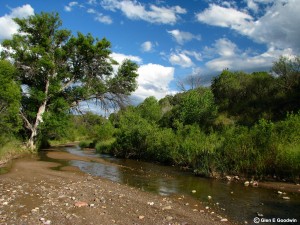
Jul 30, 2012 | Blog
Protecting Our Water Resources; Is Drought the New Normal?
 With the Summer Rain season in full swing, it’s easy to forget that we live in the desert. It’s also easy to forget that we are in a long-term drought. There have been two recent stories in the news about our strained water resources. Both stories discuss water flow in nearby Cienega Creek. KVOA offers NASA images capture Tucson – then and now. The Arizona Daily Star has an article called Cienega Creek, other S. AZ. streams, increasingly dry.
With the Summer Rain season in full swing, it’s easy to forget that we live in the desert. It’s also easy to forget that we are in a long-term drought. There have been two recent stories in the news about our strained water resources. Both stories discuss water flow in nearby Cienega Creek. KVOA offers NASA images capture Tucson – then and now. The Arizona Daily Star has an article called Cienega Creek, other S. AZ. streams, increasingly dry.
The drought raises questions. The biggest one is how in the world can we support mining in the Santa Rita and Patagonia Mountains given the huge amounts of water they consume? Rosemont’s supposed solution is using CAP water to recharge the aquifer. Whether it can be done and whether it will help is debatable. Regardless, Rosemont Copper can pump all the groundwater they want without the CAP recharge.
There are four other mining companies doing mineral explorations in the Patagonia Mountains. Arizona Mining Inc (Wildcat Silver), the one furthest along, estimated that their planned open pit mine would consume roughly 700,000 gallons of water per day. Per day! For comparison, the maximum pumping capacity of the Town of Patagonia’s well water is 110,000 gallons per day. Don’t forget the 3 other international mining companies that want to mine in the Patagonia Mountains. Using the figure of 700,000 gallons of water per day per mine results in 2.8 million gallons of water used per day. Big numbers need perspective.
Because all water sites seem to deal in acre feet, let’s do comparisons in those figures. 2.8 million gallons equals 8.6 acre feet. Estimated water usage from four mines per year using Arizona Mining Inc’s (Wildcat Silver) numbers comes out to 3,139 acre feet. The Santa Cruz Active Management Municipal Areas which includes Nogales, Rio Rico, Tubac, Arivaca, uses 7800 acre feet of water per year. That does not include Patagonia, Sonoita or Elgin. Mining in the Patagonia Mountains could potentially use almost half of all the water used annually in the most populated cities in Santa Cruz County.
Do we even have that much water? Is this drought the new normal?
Sources:
An Investigation of Energy Use, Water Supply and Wastewater Treatment at Patagonia, Arizona
AMA Cultural Water Demand – Municipal Demand
Trucks, water, and jobs at issue with silver mine
Jul 25, 2012 | Blog
Our news feeds picked up this story. It begins…
“A peasant town in central Mexico has declared war on the world’s richest man, Carlos Slim, to prevent him from operating a gold and silver mine that threatens the environment.”
With just that line, those of us here in Patagonia are shaking our heads and thinking, “yeah, we know how that goes.” But this story has shades of differences compared to ours. First off, the mining company Mr. Slim owns, Minera Frisco, is not a foreign company, (The companies wanting to mine our mountains are Candadian and Australian.) it’s actually Mexican. Their Wikepedia page says: : “Minera Frisco (BMV: MFRISCO) is a Mexican mining company that engages in the exploration, exploitation, production, and trade of mineral deposits in Mexico and internationally.” Not sure who wrote that, but I personally love that they fit the word ‘exploitation’ in there. So instead of a foreign company destroying the land with toxic wastes, it’s destruction from within. Not better or worse, still descpicable.
Secondly, it’s the poor people, the campesinos (peasants as they’re called in this article) that have organized and risen up against Mr. Big Bad Slim Wolf. They depend on the land, the air, the water, and they know that this mine will destroy their lives. They GET IT.
“We are not afraid to take on a gentleman who is so poor that the only thing he has is money. They will commit ecocide and genocide because they will pollute our rivers, from which we drink water, with mercury,” said the president of the grassroots organization Tetela Hacia el Futuro, German Romero.
“So poor that the only thing he has is money.” WOW. I’m asking myself, why the people in Tetela de Ocampo, a community of campesinos who are arguably poorer – economically – than most of our population here in Patagonia see it that way instead of being willing to sell out their environment for the promise of jobs? What’s the difference between those people, that community, and ours?
Minera Frisco “is a company that picked the wrong place,” resident Hector Lazaro said. “We don’t want its money or its jobs.”
Maybe part of the reason is that we – PARA – have not done a good enough job in educating our community about the real and certain dangers of destruction to our mountains, our watershed and our town. Part of it also lies in the fact that the campesinos in Tetela de Ocampo do have ‘jobs’ already. According to the article, it’s a town of 25,000 residents who grow apples, peaches, chili peppers and hydroponic tomatoes.” As I said, they depend on clean soil, water and air.
Another difference is that here we are forced to play the game of ‘negotiating’. It’s what we’re told we have to do by the USFS. We have to suggest mitigation – ways in which the mining companies can make their toxins not quite so toxic. But in Tetela de Ocampo they don’t go in for that absurdity.
There will be no negotiations with Minera Frisco over the permits for a change of use or the license for the mine, Tetela de Ocampo Mayor Marco Antonio Uribe told Efe.
“For us, there is no price they can pay to bring misfortune to our people,” Uribe said.
They don’t want ‘better’ leach ponds or tailing piles moved from here to there. They don’t want no stinking mine AT ALL.
And that’s just how we feel. The mining companies can puke out all the lies they want about ‘new technologies’, and ‘sustainability’. But they know they’re lies and so do we. We here at PARA, along with the rest of a growing community of Watchdogs, stand united with the people of Tetela de Ocampo. May both our communities, along with all the other communities around the globe, be successful in standing up to these mining companies and preserving our eco-systems and our way of life.
Read the full article.
Also watch this six minute PBS video about a Panamanian communities struggle: In Panama, ‘New Conquistadors’ Protest Canadian Copper Mines
Jul 16, 2012 | Blog
On July 12, HR 4402, the “National Strategic and Critical Minerals Production Act of 2012” passed the House with a vote of 256 – 160. Twenty-two Democrats voted with Republicans. This bill declares all domestic mineral extraction vital to the nation’s security, infrastructure and economic security. HR4402 would require less public review and environmental protection for all hardrock mines proposed anywhere in this country! Instead of improving the 1872 Mining Law, this bill sets out to force a broken system to work faster.
The House rejected five Democratic Amendments to the bill. One, introduced by Raul Grijalva, was to prohibit mineral permits for any activity that would affect hunting, fishing, grazing or recreation on public lands.
Here are some articles from around the web about the passage of this bill.
Republicans push through mining deregulation bill that could avoid US environmental reviews
House bill would cut environmental review time for mines
Anderson issues mining challenge
Duffy draws from Wisconsin mining bill lessons
Legislation will streamline approvals process: Clement
And this excerpt from the Hill blog is at the heart of the matter:
“House passage sends the bill to a Democratic Senate that is likely to ignore the bill. On Tuesday, the Obama administration said it “strongly opposes” the bill because of its implications for the environment, and agreed with House Democrats that it would streamline permitting procedures for nearly all hardrock mining.”
However, that is no reason for us to rest on our laurels. It’s an election year, and this bill, as it moves to the Senate, is like a ticking time bomb. It is precisely the environmental review process that affords us, as citizens, the opportunity to protect our public lands, our air, our water, and our economic viability as a tourist based economy. This bill shows that the process, as it stands, is indeed preventing some mining companies from moving forward with their path of destruction, and that’s precisely why this bill was concieved in the first place.
We’ll let you know when this bill moves on to the Senate for a vote, and we’ll have a letter available for you to sign and send. If you’re not already subscribed to our e-newsletter, you can do so Here.
Jun 25, 2012 | Blog
Dear Ms. Bush,
The Patagonia Area Resource Alliance was horribly disappointed with your editorial for Tucson KOLD News, “Time to end fight, start mining”.
We don’t consider actions of the opposition to the proposed Rosemont Mine as fighting. This mine would have a permanent impact on the area’s water supply, ecosystem, landscape and residents. We, the public, are entitled to a thorough analysis of the potential impacts of the proposed mine as accorded to us by the National Environmental Policy Act. When governing agencies fail to follow the rules as dictated by NEPA, lawsuits are often the only tool available to get compliance. Public lands belong to everyone, and we have a legal right to a transparent and thorough review of projects proposed on our public land. Don’t deny us our due process.
Arizona was traditionally a mining state, but mining has been replaced by the tourism, aerospace, and micro-electronics industries as our top revenue producers. Also consider that the revenue generated by mining is closely followed by that generated through agriculture/food production. Mining is no longer the primary driving economic force of Arizona. The Arizona Office of Tourism commissioned a ten year study that showed total direct travel spending in Arizona in 2008 was $18.5 billion with $1.4 billion in state and local tax revenues and $1.2 billion in federal tax revenues. These revenues are most important to rural areas like Sonoita. Can we afford to jeopardize our largest economic driver and greatest source of tax revenue?
Also note that a study commissioned by the Western Governors’ Association showed that outdoor recreation is a $646 billion national industry and in the Western States, it’s a $256 billion industry. Why not promote outdoor recreation in the Santa Rita Mountains? It’s sustainable; compatible with the current ranching and farming economy; and far less harmful to the water supply and ecology.
Arizona currently has enough operating copper mines to meet demand. These mines currently have hundreds of unfilled job openings implying that they are not even operating at full production. If current mines are unable to find sufficient workforce in Arizona, where is Rosemont Copper going to get their workers? The jobs they promise will have to be filled by an imported workforce. How does that benefit the unemployment rate in Arizona?
The Rosemont Mine has a projected life-span of approximately 20 years and will result in permanent damage to the Rosemont Valley and surrounding ecosystem. We need visionaries willing to look at the bigger picture and willing to move forward with what is going to benefit the most people for the longest period of time. The proposed Rosemont Mine does not fit that bill. Pushing it forward for the sake of short-term jobs denies the area of the much greater potential economic benefits of promoting industries such as ranching, food & wine production, outdoor recreation and tourism. We ask that you reconsider your position and promote a more sustainable and beneficial economic future for all Arizonans.
Sincerely,
Wendy Russell
Patagonia Area Resource Alliance
If you’d like to record a rebuttal to the KOLD editorial, e-mail Debbie Bush at dbush@TucsonNewsNow.com
Jun 14, 2012 | Blog
Tombstone Arizona has made national headlines regarding its battle with the Forest Service over water rights. For 130 years pipelines have transported water from the Huachuaca Mountains 26 miles to Tombstone. The Monument Fire and subsequent mud slides last year destroyed this pipeline system. Tombstone has been trying to get emergency permission from the Sierra Vista District of the Coronado National Forest to bring in heavy equipment to repair the water system without success. The case has also gone to court, twice. Tombstone has lost both times.
Reasons given by the courts include the question of actual need and urgency of the repairs. Also in question is Tombstone’s entitlement to the water in the national forest. Tombstone claims rights to 25 springs while the Forest Service says they have permits for only 5. The federal government said none of that gives the city unfettered right of access. The Forest Service has also cited the Wilderness Protection Act as a reason for their reluctance to allow the requested repair of the pipeline. Machinery of any kind is banned in a Wilderness Area where the pipeline is located.
Another reason given was the presence of Mexican spotted owls. The owls are a threatened species. Supposedly, their presence is the big reason that the Forest Service wouldn’t grant Tombstone a permit to use heavy equipment to fix the pipeline. I have a hard time believing that one.
Here in the Patagonia Mountains we are lucky to still have Mexican spotted owls. Last year, the Sierra Vista District of the Coronado National Forest granted permission to Arizona Minerals aka Wildcat Silver to start exploratory drilling operations within Mexican spotted owl habitat. This drilling project would have operated 24 hours a day, 7 days a week, for 300 consecutive days. Along with noise and light disturbance there was the extremely high likelihood of destruction of owl habitat. Even the presence of a nearby federally-designated Mexican spotted owl Protected Activity Center didn’t block the approval of the drilling project. We, along with the Defenders of Wildlife and Sky Island Alliance had to sue the Forest Service to stop the drilling project.
It’s not just about the owls. The bigger question is how does the exact same Forest Service office come up with completely opposite policy actions?
U.S. high court denies Tombstone water relief
Sierra Vista Herald Sat, 06/02/2012
Tombstone readies picks and shovels
Sierra Vista Herald 06/07/2012
Spotted owl could be game-changer in Tombstone water war
CNN 06/09/2012
Jun 1, 2012 | Blog
We are thrilled to share this news from the Western Action Mining Project!
“This decision sets a major precedent across the western states,” said Roger Flynn, lead attorney representing the Karuk Tribe of California, and the Director and Managing Attorney of the Western Mining Action Project, a Colorado-based non-profit environmental law firm specializing in mining issues in the West. “The government and miners had argued that the archaic 1872 Mining Law, which is still on the books today, overrides environmental laws such as the Endangered Species Act. The Court flatly rejected that untenable position.” said Flynn.
FOR IMMEDIATE RELEASE
*Federal Ninth Circuit Court of Appeals Rules in Favor of Endangered Species Over 1872 Mining Law* *Strikes Down U.S. Forest Service Approvals of Mining Projects Across West *
June 1, 2012
Contacts: Craig Tucker: Karuk Tribe of California, Klamath River Coordinator, Happy Camp, California. 916-207-8294
Roger Flynn: Attorney, Western Mining Action Project, Lyons, Colorado (303) 823-5738
Happy Camp, California, and San Francisco: In a highly-anticipated decision from the En Banc panel of 11 judges of the federal Ninth Circuit Court of Appeals in San Francisco, the Court today held that the U.S. Forest Service violated the federal Endangered Species Act (ESA) when the agency approved a slew of mining operations in salmon habitat in and along the Klamath River system in northern California. The new decision, issued by a majority of seven judges on the En Banc panel, reversed a lower court decision (issued in 2005) and a previous decision of a 3-judge panel of the Ninth Circuit (issued in 2011). The earlier decisions had affirmed the federal government’s actions in approving numerous “suction dredge” and other mining operations, such as “highbanking” and “motorized sluicing,” in designated “critical habitat” for the Coho Salmon, listed as a threatened species in Southern Oregon and Northern California under the ESA. The case was brought by the Karuk Tribe of California, which initially filed the lawsuit in 2004 in federal court in Oakland.
The Tribe filed the lawsuit to protect the salmon and its habitat, which have been a central part of the Tribe’s existence since time immemorial. Beginning in the early 1990s, a flood of smaller-scale mining operations, primarily suction dredging operators, invaded the Klamath River system to search for gold in and along the banks of these rivers and streams. As described by the Court’s decision, “These miners use gasoline- powered engines to suck streambed material up through flexible intake hoses that are typically four or five inches in diameter. The streambed material is deposited in a tailings pile in or beside the stream. Dredging depths are usually about five feet, but can be as great as twelve feet.” The Court detailed the scientific studies that found that suction dredging in critical species habitat “can directly kill and indirectly increase mortality of fish — particularly … salmonid eggs and early developmental stages.” “Highbanking” and “motorized sluicing” occur mainly outside the river, where mining operators pump water out of the stream to strip the riverbank of materials for processing in sluice boxes, then dump the remaining materials in tailings waste piles along the shore.
Beginning in 2003 and 2004, the Forest Service allowed suction dredging and highbanking/sluicing on more than 35 miles of the Klamath River and its tributaries, without conducting any public environmental reviews, without subjecting its actions to any public notice, and, importantly for this case, without any compliance with the ESA. The Tribe’s lawsuit challenged the agency’s failure to protect the salmon and its habitat, which have been determined by the National Oceanic and Atmospheric Administration (NOAA) to be threatened with extinction. The agency had approved all of the mining via its “Notice of Intent” (NOI) process, which the agency argued exempted itself from compliance with federal environmental and wildlife protection laws.
The Court rejected that claim, concluding that: “We therefore hold that the Forest Service violated the ESA by not consulting with the appropriate wildlife agencies before approving NOIs to conduct mining activities in coho salmon critical habitat within the Klamath National Forest.”
“Today, the Court vindicated our long struggle to protect the salmon and our people, which have been linked together since time immemorial,” said Leaf Hillman, Director of the Karuk Tribe’s Natural Resource Department. “The Forest Service’s decision to place the search for miniscule flakes of gold above the needs of people who rely on clean water, and especially wild salmon, was unconscionable,” continued Hillman. “We had no choice but to challenge the agency’s illegal mining approvals,” said Hillman.
“This decision sets a major precedent across the western states,” said Roger Flynn, lead attorney representing the Tribe, and the Director and Managing Attorney of the Western Mining Action Project, a Colorado-based non-profit environmental law firm specializing in mining issues in the West. “The government and miners had argued that the archaic 1872 Mining Law, which is still on the books today, overrides environmental laws such as the Endangered Species Act. The Court flatly rejected that untenable position.” said Flynn.
Although focused on the mining in northern California, the Forest Service’s practice of failing to consider the ESA when approving smaller-scale mining projects such as suction dredging occurs throughout the West. “Today’s decision sets the proper balance between mining and the protection of clean water and wildlife habitat across the West,” noted Flynn. “The law requires that the federal agencies ensure that mining is responsible and reasonable, and protects communities and the environment. The Court today re-affirmed this guiding principle of federal public land management.” said Flynn.
“To the Karuk people, salmon and free-flowing clean water are essential elements of our culture and heritage,” said Hillman. “With today’s decision, we can begin to repair the damage caused by irresponsible mining and look forward to a brighter future for the salmon and our people.” concluded Hillman.
A copy of today’s decision can be found on the Court’s website at:
http://www.ca9.uscourts.gov/datastore/opinions/2012/06/01/05-16801.pdf
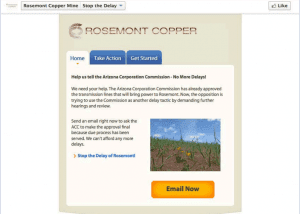
May 23, 2012 | Blog
The Rosemont Copper PR/astroturf machine is once again trying to portray poor little Rosemont as a victim.
It’s most recent effort revolves around claims Rosemont and its investors are being victimized by “delay tactics” that are preventing the company from digging its massive open pit copper mine southeast of Tucson. They’ve even created a Facebook campaign asking people to apply pressure on policymakers to make decisions or take actions favorable to Rosemont.

But Rosemont’s victim act is as self-serving as it is inaccurate. Read more at Rosemontminetruth.com
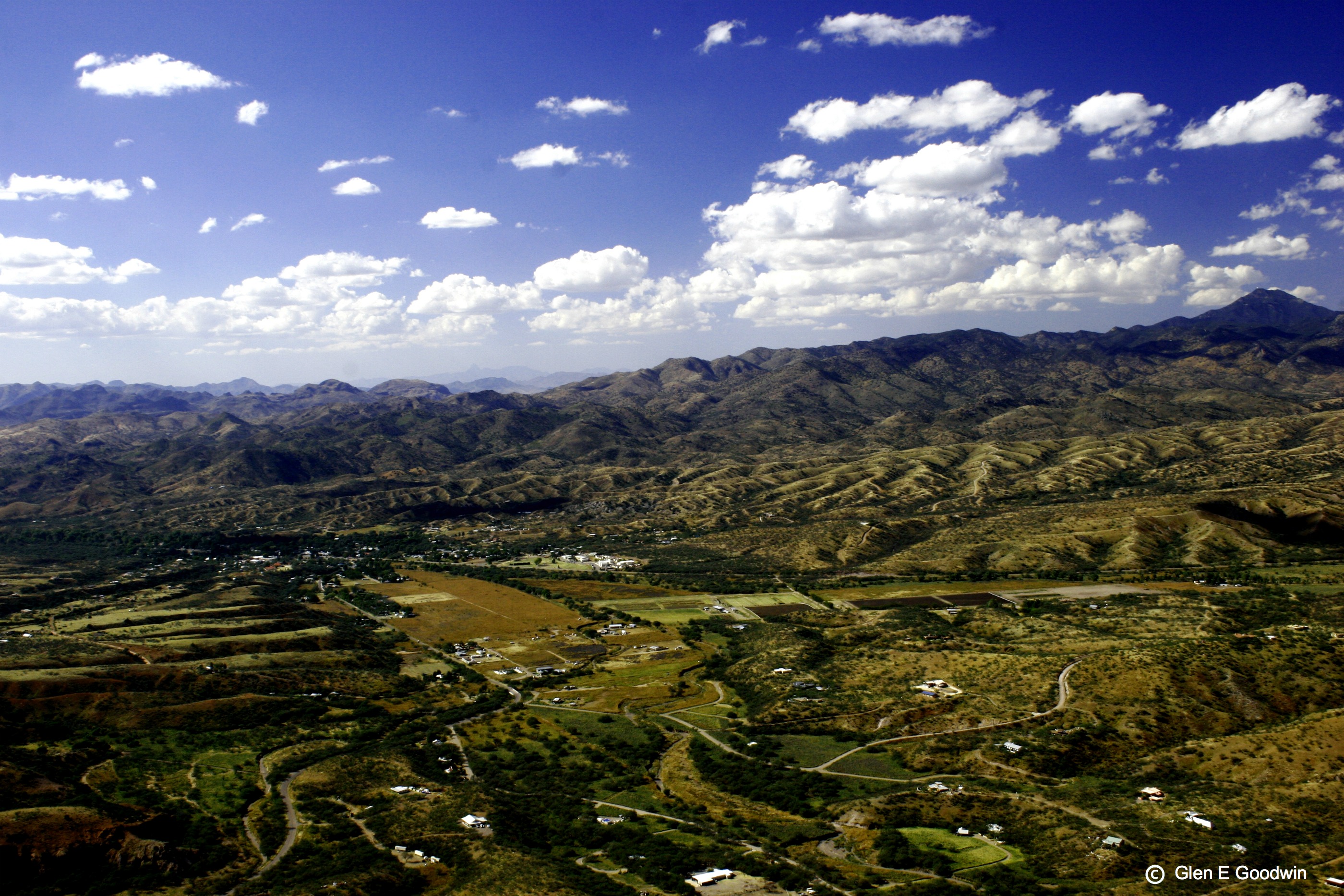
May 19, 2012 | Blog
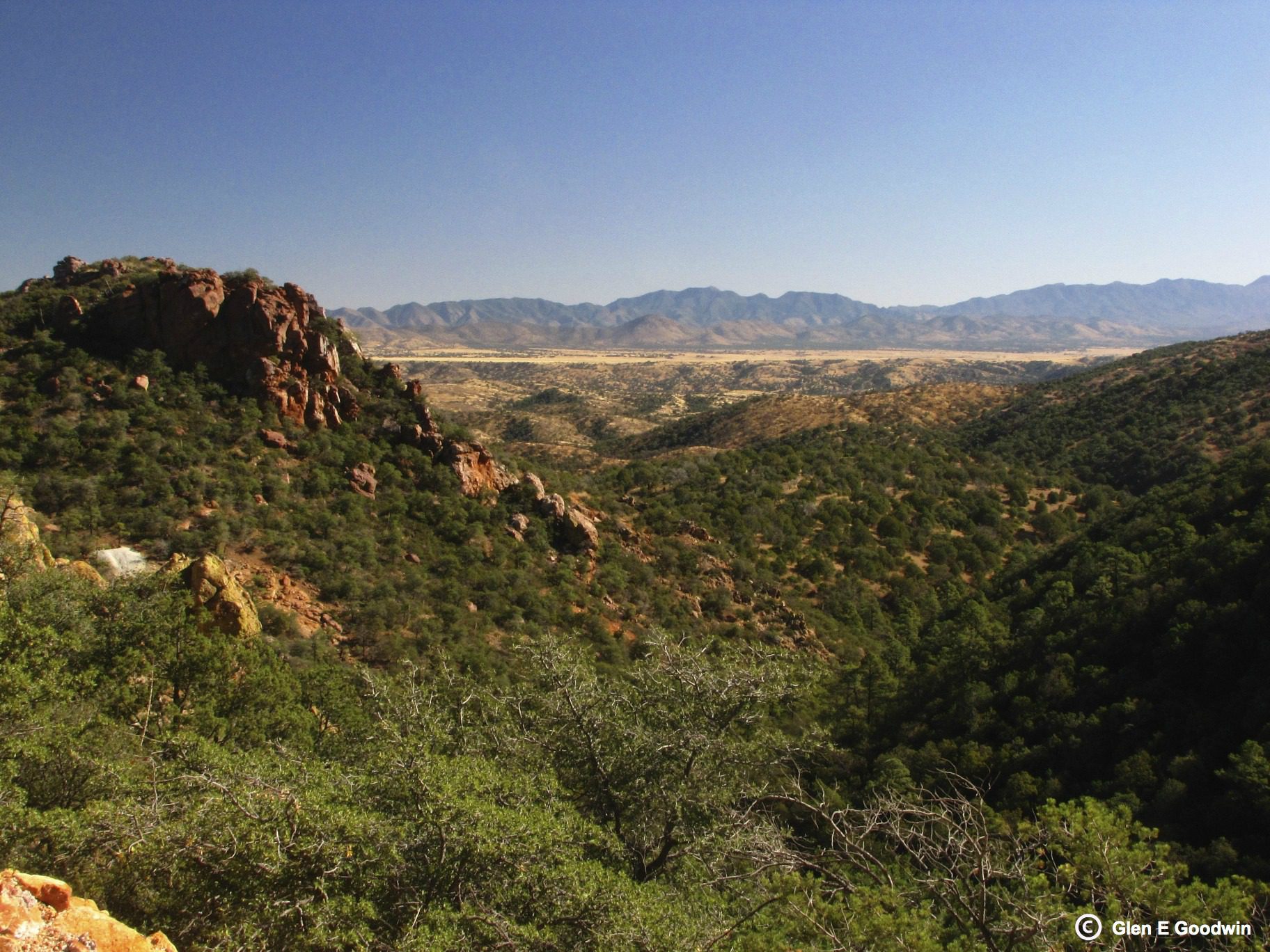
May 19, 2012 | Blog
May 14, 2012 | Blog
One of those stories that caught our attention was the sudden and immediate departure of Arizona Mining Inc / Wildcat Silver (TSX:AZ) President and CEO Christopher M Jones, announced in a Arizona Mining Inc / Wildcat Silver press release dated May 7, 2012. Board members Richard Warke will assume CEO duties and Donald Taylor, will become President and Chief Operating Officer as well as continuing in their current duties.
You might remember Warke from other news. He is also on the Board of Directors for Augusta Resource (TSX/NYSE:AZC), the company that owns Rosemont Copper. He’s one of 2 men that Save the Scenic Santa Ritas called for investigations by U.S. and Canadian securities regulators, the Arizona Corporation Commission, and the Arizona Attorney General for failure to disclose past bankruptcy.
By the way, Augusta and Arizona Mining Inc / Wildcat Silver are closely related. In addition to Warke, they share 4 other Board members. They also list the same corporate office address, #400 – 837 Hastings St. Vancouver, BC.
It seems extremely odd that if all is going well, why the sudden departure of Chris Jones, President and CEO of Arizona Mining Inc / Wildcat Silver without a new replacement. Another interesting coincidence is that Augusta/Rosemont Copper also had a change at the top just two days later. Augusta announced the retirement of Raghunath Reddy as CFO in a press release dated May 9, 2012.
Two top level executives leaving the Augusta/Wildcat family within two days of each other seems peculiar to us. What about to you? We suppose that the reaction of the investors to this news will tell us more.


 With the Summer Rain season in full swing, it’s easy to forget that we live in the desert. It’s also easy to forget that we are in a long-term drought. There have been two recent stories in the news about our strained water resources. Both stories discuss water flow in nearby Cienega Creek. KVOA offers
With the Summer Rain season in full swing, it’s easy to forget that we live in the desert. It’s also easy to forget that we are in a long-term drought. There have been two recent stories in the news about our strained water resources. Both stories discuss water flow in nearby Cienega Creek. KVOA offers 



